Punic Wars › Alexios I Komnenos » Ancient origins
Articles and Definitions › Contents
- Punic Wars › Antique Origins
- Alexios I Komnenos › Who Was
Ancient civilizations › Historical and archaeological sites
Punic Wars › Antique Origins
Definition and Origins
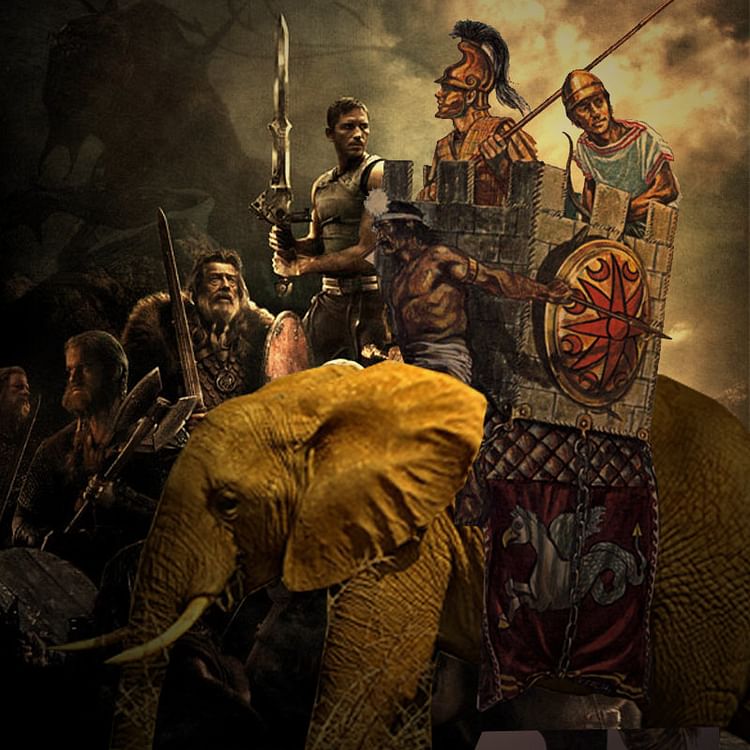
The Punic Wars were a series of conflicts fought between the forces of ancient Carthage and Rome between 264 BCE and 146 BCE. The name Punic comes from the word Phoenician ( Phoinix in the Greek, Poenus from Punicus in Latin) as applied to the citizens of Carthage, who were of Phoenician ethnicity. As the history of the conflict was written by Roman authors, they labeled it 'The Punic Wars'. Carthage grew from a small port-of-call to the richest and most powerful city in the Mediterranean region before 260 BCE. She had a powerful navy, a mercenary army and, through tribute, tariffs, and trade, enough wealth to do as she pleased. Through a treaty with the small city of Rome, she barred Roman trade in the Western Mediterranean and, as Rome had no navy, was able to easily enforce the treaty. Roman traders caught in Carthaginian waters were drowned and their ships taken.
FIRST PUNIC WAR
As long as Rome remained the little city of trade by the Tiber River, Carthage reigned supreme; but the island of Sicily would be the flashpoint for growing Roman resentment of the Carthaginians. Sicily lay partly under Carthaginian and partly under Roman control. When Heiro II of neighboring Syracuse fought against the Mamertines of Messina, the Mamertines asked first Carthage and then Rome for help. The Carthaginians had already agreed to help and felt betrayed by the Mamertines' appeal to Rome. They changed sides, sending forces to Hiero II. The Romans fought for the Mamertines of Messina and, in 264 BCE, Rome and Carthage declared war on each other for the control of Sicily.
HAMILCAR BARCA STRUCK WITHOUT WARNING UP & DOWN THE COAST OF ITALY DESTROYING ROMAN OUTPOSTS & CUTTING SUPPLY LINES.
Although Rome had no navy and knew nothing of sea battles, they swiftly built and equipped 330 ships. As they were far more used to fighting land battles, they devised the clever device of the corvus, a moveable gangplank, which could be attached to an enemy's ship and held in place with hooks. By immobilizing the other ship, and attaching it to their own, the Romans could manipulate a sea engagement through the strategies of a land battle. Even so, they lacked the expertise at sea of the Carthaginians and, more importantly, were lacking a general with the skill of the Carthaginian Hamilcar Barca. Hamilcar was surnamed Barca (meaning `lightning') because of his speed in attacking anywhere and the suddenness of the action. He struck without warning up and down the coast of Italy destroying Roman outposts and cutting supply lines.
Had the Carthaginian government better supplied and reinforced Hamilcar, they most probably would have won the war but, instead, they contented themselves with hoarding their wealth and trusted to Hamilcar and his mercenaries to take care of the war. He defeated the Romans at Drepana in 249 BCE but then was forced to withdraw due to a lack of manpower and supplies. According to the historian Durant,
Worn out almost equally, the two nations rested for nine years. But while in those years Carthage did nothing…a number of Roman citizens voluntarily presented to the state a fleet of 200 men-of-war, carrying 60,000 troops.
The Romans, more experienced at sea battles now and better equipped and led, won a series of decisive victories over Carthage and in 241 BCE the Carthaginians sued for peace.
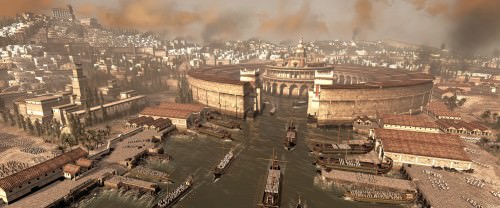
Carthage and its Harbour
This war was costly to both sides but Carthage suffered more seriously owing to the corruption and incompetence of her government (which embezzled funds which should have gone to the military and consistently refused to send much needed supplies and reinforcements to generals in the field), the mostly mercenary army (who often simply refused to fight), and an over-reliance on the brilliance of Hamilcar Barca. Further, however, they seriously underestimated their enemy. While Carthage would largely ignore the war, leaving the fighting to Hamilcar and his mercenaries, Rome would be building and equipping more ships and training more men. Even though Rome had never had a navy before the First Punic War, they emerged in 241 BCE as masters of the sea and Carthage was a defeated city.
CARTHAGE CONCENTRATED ON THE CONQUEST OF SPAIN RATHER THAN TRYING TO DRIVE THE ROMANS OUT OF THEIR FORMER COLONIES.
During the war, the Carthaginian government had repeatedly failed to pay its mercenary army and, also in 241 BCE, these mercenaries laid siege to the city. Hamilcar Barca was called upon to raise the siege and did so, even though Carthage had refused him the much-needed supplies and reinforcements on his campaigns on her behalf and he had led most of these mercenaries in battle himself. The Mercenary War lasted from 241-237 BCE and, while Carthage was engaged in this conflict, Rome occupied the Carthaginian colonies of Sardinia and Corsica. While Carthage was unhappy with this development, there was little they could do about it. They concentrated their efforts on the conquest of Spain rather than trying to drive the Romans out of their former colonies.
In 226 BCE the Ebro Treaty was signed between Carthage and Rome agreeing that the Romans would hold Spanish territory north of the Ebro River, Carthage would hold the area they had already conquered south of the river, and neither nation would cross the boundary.
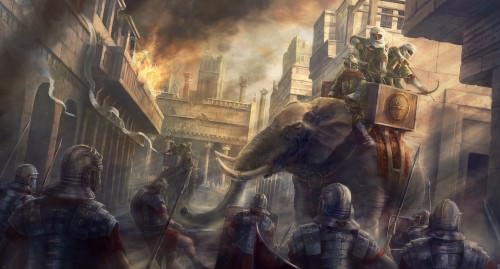 CARTHAGINIAN WAR ELEPHANT
CARTHAGINIAN WAR ELEPHANT

SECOND PUNIC WAR
To the south of the border lay the city of Saguntum, a Roman ally, and, in 219 BCE, the great Carthaginian general Hannibal(Hamilcar's son) lay siege to the city and took it. The Romans objected to this attack and demanded that Carthage deliver Hannibal to Rome. The Carthaginian senate refused to comply and so began the Second Punic War (218-202 BCE).
HANNIBAL WAS CAUGHT IN SOUTHERN ITALY IN A CAT & MOUSE GAME WITH THE ROMAN ARMY.
Hannibal, a sworn enemy of Rome, received intelligence that Roman armies were moving against him and, in a bold gamble, marched his forces over the Alps and into northern Italy. Hannibal then proceeded to win every single engagement against the Romans, conquering northern Italy and gathering former allies of Rome to his side. Having lost many of his elephants on his march over the mountains, and lacking necessary siege engines and troops, Hannibal was caught in southern Italy in a cat and mouse game with the Roman army under Quintus Fabius Maximus. Fabius refused to engage Hannibal directly relying, instead, on cutting off his supplies and starving his army.
Fabius' strategy might have worked had not the Romans become impatient with their legions' inactivity. Further, Hannibal used counter-intelligence to reinforce and spread the rumor that Fabius refused to fight because he was in the pay of the Carthaginians. Fabius was replaced by Caius Terentius Varro and Lucius Aemilius Paulus who threw off caution and led their troops against Hannibal in the region of Apulia. At the Battle of Cannae in 216 BCE, Hannibal placed his Gauls in the center of his lines, expecting they would give way before the Roman forces. When they did exactly that, and the Romans pressed what they saw as an advantage and followed them, Hannibal closed from behind and the sides, enveloping the Roman forces and crushing them. 44,000 Roman soldiers died at Cannae compared with 6000 of Hannibal's forces. Hannibal won his greatest victory but could not build upon it as Carthage refused to send him the reinforcements and supplies he needed.

Campaigns of the Second Punic War
Shortly after this, the Roman general, Publius Cornelius Scipio (later known as Scipio Africanus, who had fought against Hannibal at Cannae) was defeating the Carthaginian forces in Spain (under Hannibal's brother, Hasdrubal). Recognizing that Hannibal's army would be recalled if Carthage were attacked, Scipio manned a fleet and sailed to North Africa where he took the Carthaginian city of Utica. Carthage recalled Hannibal from Italy to save their city but Scipio was a great admirer of Hannibal and had studied his tactics carefully. At the Battle of Zama in 202, Hannibal sent an elephant charge against the Romans which Scipio, mindful of Hannibal's strategies, deflected easily. The Romans killed the Carthaginians on the elephants and sent the animals back into the Carthaginian ranks, then followed with a combined cavalry charge and infantry advance which caught the enemy between and crushed them. Hannibal returned to the city and told the Senate that Carthage should immediately surrender.

Scipio Africanus the Elder
Scipio allowed Carthage to retain her colonies in Africa but she had to surrender her navy and was not allowed to make war under any circumstances without Rome's approval. Carthage was also to pay Rome a war debt of 200 talents every year for fifty years. Carthage was, again, a defeated city but, retaining its trading ships and ten warships to protect them, was able to struggle on and begin to prosper. The Carthaginian government, however, still as corrupt and selfish as it had always been, taxed the people heavily to help pay the war debt while they, themselves, contributed nothing. Hannibal came out of retirement to try to rectify the situation, was betrayed by the rich Carthaginians to the Romans, and fled. He died by his own hand, drinking poison, in 184, aged sixty-seven.
THIRD PUNIC WAR : CARTHAGE DESTROYED
Carthage continued paying the war debt to Rome for the proscribed fifty years and, when it was done, considered their treaty with Rome completed also. They went to war against Numidia, were defeated, and had to then pay that nation another war debt. As they had gone to war without Rome's approval, the Roman senate considered Carthage a threat to the peace again.
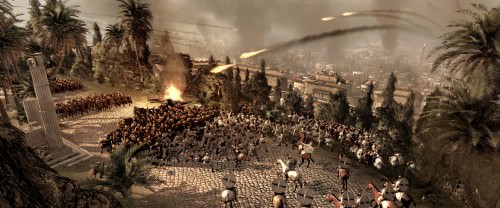
Carthage Under Siege
The Roman senator Cato the Elder took the threat so seriously that he would end all of his speeches, no matter the subject, with the phrase, “And, further, I think that Carthage should be destroyed.” In 149 BCE Rome sent an embassy to Carthage suggesting exactly that course: that the city should be dismantled and moved inland away from the coast. The Carthaginians refused to comply with this and so began the Third Punic War (149-146 BCE).
The Roman general Scipio Aemilianus besieged the city for three years and, when it fell, sacked it and burned it to the ground.Rome emerged as the pre-eminent power in the Mediterranean and Carthage lay in ruin for over one hundred years until it was finally re-built following the death of Julius Caesar. The Punic Wars provided Rome with the training, the navy, and the wealth to expand from a small city to an empire which would rule the known world.
Alexios I Komnenos › Who Was
Definition and Origins

Alexios I Komnenos (Alexius Comnenus) was emperor of the Byzantine Empire from 1081 to 1118 CE. Regarded as one of the great Byzantine rulers, Alexios defeated the Normans, the Pechenegs, and, with the help of the First Crusaders, the Seljuks to put the empire back on its feet after years of decline. He would found the Komnenoi dynasty which included five emperors who ruled until 1185 CE. The emperor's life was recorded in the Alexiad, written by his daughter Anna Komnene.
SUCCESSION & FAMILY
Alexios came from a military family from Asia Minor, and he had royal blood for he was the nephew of Emperor Isaac Komnenos (r. 1057-1059 CE). Alexios' father was John Komnenos, a senior military commander of the imperial guard ( domestikos of the Scholai ), and his mother, Anna Dalassena, was from a respected aristocratic family. In 1078 CE he married Irene Doukaina, who was distantly related to two former emperors and an ex-Tsar of the Bulgars. Alexios certainly had the pedigree to rise to the very top. He excelled in the army and rose to the position of general under Emperor Michael IV (r. 1034-1041 CE), never losing a battle.
Alexios, still a general but aged just 24, led a revolt against Emperor Nikephoros III (r. 1078-1081 CE) in 1081 CE after a series of damaging military defeats shrank the empire and threatened even the capital Constantinople. The economy was also stuttering with Nikephoros forced to devalue the gold nomisma, the main coinage of Byzantium. The aged Nikephoros saw the writing on the wall and abdicated, later retiring to a monastic life. Encouraged by his mother and backed by an alliance of powerful aristocratic families, Alexios took the vacant throne on Easter Day 1081 CE and made Anna, his mother, his chief advisor, granting her equal powers with himself in an imperial edict. Known for her piety, she was, nevertheless, as ruthless and able a politician as any male member of the court.
ALEXIOS I WOULD OVERSEE A STRING OF MILITARY VICTORIES AGAINST THE PEOPLES HARASSING THE BORDERS OF HIS EMPIRE.
Alexios' eldest daughter, Anna Komnene, was for a time his official heir following her marriage to Constantine Doukas, the son of Michael VII (r. 1071-1078 CE). In 1087 CE Alexios had a son, John, who became his chosen heir. When Constantine Doukas died an early death, Anna married the gifted general Nikephoros Bryennios the Younger and plotted with her grandmother, Anna Dalassene, to make her new husband the next emperor, although this plan failed, largely because Nikephoros remained loyal to the official heir John. Alexios' eldest daughter turned out to be a historian of note, whose work on 11th-century CE Byzantium has become an invaluable source for her modern colleagues in that field. Her Alexiad covers the period 1069 to 1118 CE and is principally a tribute to her father. The work is the only such book written by a woman in the Middle Ages.
MILITARY CAMPAIGNS
The Norman Invasion
The Byzantine Empire had been shrinking during the 11th century CE, but Alexios would oversee a string of victories against the peoples harassing the borders of his kingdom. The first group to be driven back and the most dangerous were the Normans. These descendants of Vikings, who had already conquered Byzantine territories in southern Italy between 1057 and 1071 CE, were led by Robert Guiscard (the “Crafty”), the Duke of Apulia. Robert, having betrothed his son to a daughter of Michael VII, was doubly dangerous as he could turn into a rallying point for disaffected members of the Byzantine court. Robert conquered Bari in 1071 CE, Palermo in 1072 CE, and Salerno, the last Lombard stronghold, in 1076 CE. In 1081 CE Robert and his son Bohemund became even more ambitious and attacked Byzantine Greece.
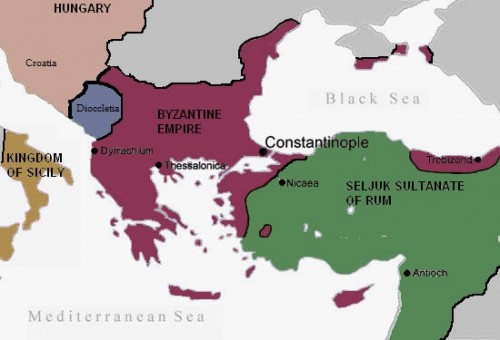
The Byzantine Empire c. 1090 CE
Alexios held the Normans back in 1082 CE despite defeats in the field and forced Robert to return to Italy to defend his interests at home. Alexios had been the crafty one and had signed a treaty of alliance with Robert's rival Henry IV, the King of the Romans, and paid a hefty fee in gold to Robert's nephew Abelard to raise a revolt in Italy. However, Bohemund continued with successes in Macedon and Thessaly, and Robert's return saw a resounding defeat of Alexios' Venetian allies in 1084 CE.Then the tide began to turn when the Norman army was hit by a devastating wave of typhoid fever in 1085 CE and Robert was one of its victims. Alexios then managed to retake Dyracchion (aka Durazzo), an important port in Dalmatia, and the Norman conquest of Greece collapsed.
The Pechenegs
Between 1085 and 1091 CE the northern frontiers of the empire saw similar incursions, in this case from the Pechenegs (aka Patzinaks), a nomadic people of the Eurasian Steppe. In past centuries the Pechenegs had served as mercenaries in the Byzantine army and been, on occasion, a useful buffer against the Bulgars and Rus, but in the mid-11th century CE they crossed the Danube and attacked Byzantine Thrace. They attacked Thracian cities again in 1087 CE, and in 1090 CE, they besieged Constantinople. The Pechenegs were joined by their allies the Seljuks, but neither could make any impression on the capital's famous fortifications, the Theodosian Walls. Alexios then responded by joining forces temporarily with the Cumans (the Turkish-speaking nomads from central Asia renowned for their archery skills) and inflicting a comprehensive defeat on the troublesome nomads on 29 April 1091 CE at the battle of Mount Lebounion. Resettling some of the defeated warriors, others were incorporated into the Byzantine army as mercenaries.
ALEXIOS INVITED MERCENARIES FROM THE WEST TO HELP HIM RECONQUER ASIA MINOR BY WRITING LETTERS TO BOTH COUNT ROBERT OF FLANDERS & POPE URBAN II.
The First Crusade
Bohemund the Norman would turn up again in Byzantine affairs 12 years after his last encounter with Alexios, when he led the First Crusade which arrived in Constantinople in 1097 CE. Actually, it was Alexios himself who had invited mercenaries from the west to help him reconquer Asia Minor by writing letters to both Count Robert of Flanders and Pope Urban II - and come they did, albeit with the grander aim of retaking Jerusalem for Christendom after its loss to the Muslims in 1077 CE. The first group to arrive in Constantinople was a rabble army led by Peter the Hermit. Pillaging and raping wherever they went, Alexios had them shipped off to Asia Minor as soon as possible where they met a predictably bloody end at the hands of the Seljuk army. The Seljuks were horsemen descended from a Turkish nomadic tribe, and they had formed the powerful Sultanate of Rum with their capital at Nicaea. The next wave of Crusaders to arrive in the East were a much more professional-looking group led by the finest knights and nobles of western Europe.
Initially, it seemed that the Normans and other Crusaders could usefully combine their forces with the Byzantine armies, Bohemund even swearing allegiance to the emperor along with the other Crusader leaders. Alexios used the Crusaders well, despite the rape and pillage perpetrated by the less pious members of the western armies which were causing chaos as they crossed Europe. Alexios may well have planned for a few new Christian kingdoms to act as a useful buffer on the empire's border, and so he directed them to free parts of Asia Minor from the Seljuks. With a mixed force of Crusaders, Alexios thus managed to recapture Nicaea in 1097 CE.
Antioch in Syria was the next big capture in June 1098 CE, but unfortunately for Alexios, on his way to support the siege he had met refugees from the area who wrongly informed him that the Crusaders were on the brink of defeat to a huge Muslim army and so the emperor returned home. Bohemund, not best pleased to find out his army had been abandoned by the Byzantines, decided to renege on his vow to return all captured territory to the emperor and kept the city for himself. The relations were thus irrevocably soured between the two leaders. Meanwhile, on 15 July 1099 CE, the Crusaders finally achieved their aim and Jerusalem was taken, the Muslim and Jewish inhabitants ruthlessly slaughtered.
The crises between the two halves of the Christian world deepened when the Normans headed back to Italy and began to plan for a Second Crusade, but this time against the Byzantine Empire whom western Christians always viewed with a healthy suspicion given their decadence and heretical religious practices. In 1107 CE the Normans, once more led by Bohemund, besieged Dyracchion. Bohemund's army was defeated, though, and the Norman leader was forced to sign the Treaty of Devol in 1108 CE, which effectively removed any Norman threat from Byzantine territory for half a century.
TRADE DEALS
Alexios' policies towards Venice would have significant consequences. In 1082 CE the Venetians were granted unrestricted trade across the Byzantine Empire, exemption from customs duties (10% of sales at the time), and even the odd warehouse and quay in Constantinople. This was in return for their crucial naval help in battling the Normans, but it would prove to be an overly generous act which hurt the Byzantine purse for decades to come and allowed Venice to develop a damaging stranglehold on trade in the East, thus establishing itself as one of the great naval powers of the Mediterranean. Similar concessions, albeit lesser ones (including a reduction of customs duties to 4%), were later granted to Genoa and Pisa whose fleets had been ravaging the Ionian coast.
INTERNAL AFFAIRS
Once he had taken over the leadership of the Romans, being always a man of action, he at once became immersed in matters of state…Alexios, the master of the science of government, directed all of his innovations towards the good of the Empire itself.Alexiad (in Herrin, 235)
Things were not always tranquil at home for Alexios either, with a revolt springing up in 1095 CE. Led by Nikephoros Diogenes, the plot was quashed, and emperor's mother had the ringleader blinded. Alexios, understandably, reorganised the Byzantine court titles as part of his restructuring of the state bureaucracy where he mainly placed family connections whom he trusted in positions of power. Those aristocrats loyal to the emperor were awarded land and tax-collecting rights in the provinces. Alexios also used marriage alliances to great effect to unify the realm, notably joining the two great and often-feuding families of Komnenos and Doukas.

Byzantine Hyperpyron of Alexios I
The emperor struggled to gain the necessary cash to pay the mercenaries he employed in his army, and for this reason, he melted down many Church valuables and raised taxes to four times their previous levels - payable in cash or labour.Compulsory military service was another unfortunate reality for much of the Byzantine peasantry. As part of his monetary reforms, a new coin was introduced, the hyperpyron (meaning “highly refined”), in 1092 CE. Made from electrum (a gold and silver alloy), it was worth one-third of the old standard gold nomisma, which had suffered under the fiscal policies of Alexios' predecessor. The hyperpyron became the new Byzantine coin standard against which all others were measured and valued until the 15th century CE.
Alexios was not shy about intervening in religious affairs, either. He re-established imperial control of the Church, reducing the power of the bishops, and he vigorously supported Orthodoxy, quashing any challengers to it. One notable group to be persecuted was the Bogomils which sprang up in Bulgaria renouncing all worldly affairs and proposing civil disobedience to its followers. Initially a movement aimed at Byzantine cultural imperialism, it spread across Western Europe and even to the heart of the Byzantine Empire. Alexios captured the Bogomil movement leader Basil - not so difficult considering they were pacifists - and had him burned to death in the Hippodrome of Constantinople.
Another target for Alexios' Orthodox zealousness was John Italos, the head of a school of philosophy in Constantinople.Considered a heretic for his Neoplatonism and picked out as a scapegoat warning for those who insisted on mixing philosophy and theology, John Italos was condemned in 1082 CE. On a more positive note, Alexios supported monasteries on Mount Athos in northern Greece and gave the island of Patmos in the Aegean to Christodoulos who founded the monastery of Saint John the Theologian in 1088 CE. The actual decree for this tax-free gift survives today in the monastery library archives.
DEATH & SUCCESSOR
When Alexios died of disease on 15 August 1118 CE, his son John became emperor as John II Komnenos. One of his first acts was to banish his scheming sister Anna to a monastery, but at least this allowed her to write her Alexiad history in peace.John reigned until 1143 CE, and he would continue the military successes of his father with victories in the Balkans and Asia Minor. The historian TE Gregory here summarises the accomplishments of Alexios I Komnenos:
He rescued the Byzantine state from the threat of imminent dissolution. He faced a series of serious military threats, and, through a combination of diplomacy, personal cunning, and his own military ability, he generally emerged the victor. By the time of his death Byzantium was once again the most powerful state in the eastern Mediterranean. (298)
LICENSE:
Article based on information obtained from these sources:with permission from the Website Ancient History Encyclopedia
Content is available under License Creative Commons: Attribution-NonCommercial-ShareAlike 3.0 Unported. CC-BY-NC-SA License